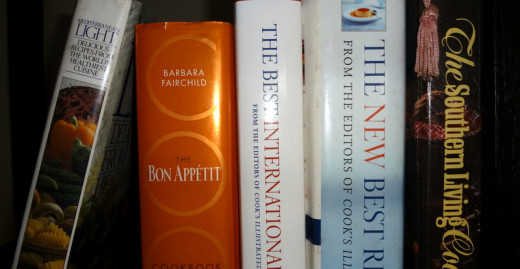How to Copyright a Recipe: Recipe Attribution

How to Copyright a Recipe
“If it wasn't for people sharing recipes, mankind would not have survived.” ~ Laurie Colwin, Food Writer
Families pass down recipes from generation to generation. Recipes have been printed on cereal boxes, cocoa tins, oatmeal cans—you get the picture—for decades. All recipes originate somewhere. So how do you know when a recipe has been plagiarized?
Speaking strictly of legalities, note the following quote from the Copyright Office of the U.S. Government:
"Mere listings of ingredients as in recipes, formulas, compounds or prescriptions are not subject to copyright protection. However, where a recipe or formula is accompanied by substantial literary expression in the form of an explanation or directions, or when there is a combination of recipes, as in a cookbook, there may be a basis for copyright protection."
A list of ingredients cannot be copyrighted. But what about the rest of the recipe? That is open to debate. However, copying a recipe word-for-word would most definitely fall into the realm of plagiarism. Between cooks, though, the issue at stake is not so much legality as respect.
According to David Lebovitz, renowned pastry chef and cookbook author, there are three rules of thumb followed by food writers:
- If your recipe is a slightly modified version of someone else’s recipe, you should qualify it as “adapted from”.
- If your recipe is still similar to an original recipe, use the label “inspired by” and then acknowledge the recipe from which you drew inspiration.
- If you change more than 3 ingredients, use your own methods to combine those ingredients and then rewrite the instructions in your own words, you can call the recipe yours.
If in doubt, always provide attribution. You should include a link to the recipe’s website or, if from a cookbook, where it is sold on the internet.
A similar principle applies to all online publishing. For example, I read David Lebovitz's "Recipe Attribution" while researching this subject. Would you call my article original, or should it be attributed to Lebovitz?

When Can a Recipe Be Called "Original"?
The answer is somewhat subjective. It has been said there are no new recipes, just reinventions of what has already been done. Hundreds, even thousands of basic recipes have been published for apple pie, chocolate cake, chicken soup, etc. Recipes considered "basic" are fair game since many variations exist and similarities are bound to arise.
Case in point: Hershey's "Perfectly Chocolate" chocolate cake. This recipe has been around for decades and there are many recognizable versions on the internet. You can find it on foodnetwork.com as Barefoot Contessa's "Beatty's Chocolate Cake". On allrecipes.com it's called "Extreme Chocolate Cake". I adapted it for my Moist Chocolate Cake With Cream Cheese Frosting & Cherry Ganache Filling. In most cases, you won't find any attribution to Hershey's. Why? Each cook writes his or her own instructions and pairs the cake with a unique frosting. Chocolate cake is also considered a "basic" recipe and thus fair game.
There are some exceptions. For instance, if you are using an innovative technique borrowed from a specific chef, he or she should receive the credit. Just remember to follow your gut feeling. Be honest, respect the work of others and give credit where credit is due.
Similar Articles:
How Can You Create Your Own Recipes?
What sparks your creativity? Do you draw inspiration from ingredients? If so, a stroll through the local farmer's market might be enough to get the creative juices flowing. Or browse one of the many great photo-driven food "porn" sites out there like TasteSpotting and Zenspotting. You might leaf through a colorful cookbook or eat at your favorite restaurant before attempting a new dish. Reading recipes will also train you in proper proportions and combinations of ingredients. But recipes should just be a starting point. The ingredients and your taste preferences will dictate where creativity leads you.
Now that you have an idea of the dish you’d like to create, put away the cookbooks and experiment with the following steps:
- Make a list of the main ingredients you plan to use, depending on what is available. Try building your recipes around seasonal produce to guarantee the highest quality ingredients.
- Ask yourself: Which herbs or spices would best complement the main ingredients? Which flavors will be prominent in this dish? Sweet or sour, salty or spicy? Try to reach a pleasing balance of flavors, and don’t forget to consider texture.
- Visualize the steps you’ll take and the appearance of the final product. You may want to number the steps, mentally “cooking” before even heading to the kitchen.
- Now that you're ready to cook, take along a notepad and pen. Jot down measurements as you create and take detailed notes of the procedures you follow.
- Don’t forget to take photos to document the process. You may end up publishing some of them along with the recipe.
- What would best finish the dish? Consider sauces or seasoning blends that might add the ultimate final touch.
Most of all, have fun! Cooking is all about the creative process and should be enjoyable. Would you like more inspiration to create recipes? How about in-depth information and methods to create your own recipes? Learn the answers in the following articles:
Now I hear the kitchen calling!








